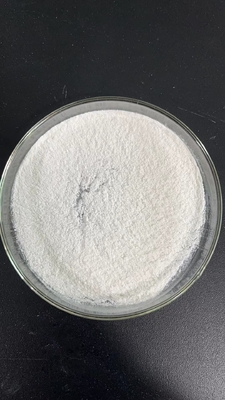Water Soluble Anti Stress γ-Aminobutyric Acid 50% CAS 56-12-2
Product Details:
| Place of Origin: | China |
| Brand Name: | DING SU |
| Certification: | ISO9001 |
| Model Number: | γ-aminobutyric acid 50 |
Payment & Shipping Terms:
| Minimum Order Quantity: | 1TON |
|---|---|
| Price: | USD 6/kg |
| Packaging Details: | 25kg/bag |
| Delivery Time: | 15 |
| Payment Terms: | L/C,T/T |
| Supply Ability: | 10000MT/year |
|
Detail Information |
|||
| Form: | Powder | Color: | White |
|---|---|---|---|
| Solubility: | Water Soluble | Odour: | Characteristic Odour |
| CAS: | 56-12-2 | ||
| Highlight: | CAS 56-12-2 γ-Aminobutyric Acid,Water Soluble γ-Aminobutyric Acid,Anti Stress γ-Aminobutyric Acid 50% |
||
Product Description
Gamma-aminobutyric acid (GABA) is a chemical that is made in the brain and also found in some foods. In the brain, GABA has anti-stress effects.
Key Functions of GABA in Livestock and Aquaculture Feed
Gamma-Aminobutyric Acid (GABA) has gained increasing attention in the Chinese feed industry, especially in livestock and aquaculture nutrition, due to its proven ability to enhance feed intake, reduce stress, and improve resilience to hypoxia. GABA is a bioactive amino acid that functions as an inhibitory neurotransmitter, providing multiple physiological benefits in animal production.
1. Growth-Promoting Effects
GABA supports animal growth and feed efficiency through several mechanisms:
-
Stimulates gastric juice and growth hormone secretion, promoting digestion and metabolic activity.
-
Activates the animal’s feeding center, increasing voluntary feed intake.
-
Reduces unconscious movements and energy expenditure, allowing more energy to be allocated to growth.
Recommended dosage: Adding 10–100 g/ton of GABA to livestock and poultry feed can result in a 5%–20% increase in daily weight gain without negatively impacting feed conversion ratio (FCR).
2. Anti-Heat Stress Function
Heat stress negatively impacts feed intake and performance in poultry and swine. GABA offers a safe and effective solution to mitigate heat stress, especially during high-temperature seasons.
-
GABA acts as a neuro-inhibitory amino acid, reducing animal activity and energy loss by inhibiting excessive neurotransmitter activity.
-
In growing livestock and poultry, supplementing 10–100 g/ton GABA can significantly enhance stress resistance and weight gain.
-
In lactating sows, adding 200–300 g/ton of GABA has been shown to:
-
Increase daily feed intake and milk production
-
Decrease body fat loss during lactation
-
Shorten the weaning-to-estrus interval
-
Improve milk quality (higher lactose and milk fat content)
-
Enhance weaning litter weight and piglet survival rate
-
3. Anti-Hypoxia Effects in Aquaculture
Oxygen depletion (hypoxia) is a major challenge in aquaculture, especially in intensive farming of fish, shrimp, and crabs.
-
GABA helps establish a “protective inhibition” mechanism, reducing the harmful effects of excitatory amino acids caused by oxygen deficiency.
-
Enhances the animal’s tolerance to low-oxygen environments.
-
Recommended dosage: Adding 10–20 g/ton of GABA to aquafeed significantly improves the anti-hypoxia ability of aquatic animals, leading to better survival and productivity.
Conclusion
Incorporating GABA into animal feed formulations provides measurable benefits across growth performance, heat stress resistance, and hypoxia tolerance. With proper dosage, GABA is a powerful, natural solution to boost productivity and resilience in both livestock and aquaculture systems.
Physical and Chemical Characteristics are as follows:
|
Items |
Standard |
|
γ-aminobutyric acid |
≥50% |
| Moisture | ≤8% |
| Heavy Metal |
≤ 0.001% |
Usage & Dosage:
Mixing into Feed Evenly. dosage is recommended in feed as follows (g/mt):
| sow | fattenning pig | piglets | layer | shrimp | fish |
| 40-60 | 30-50 | 20-40 | 10-60 | 100-120 |
80-100 |
Storage: Sealed Tightly. Avoid Exposure to Moisture.
Expiry: Two years from the date of production.





